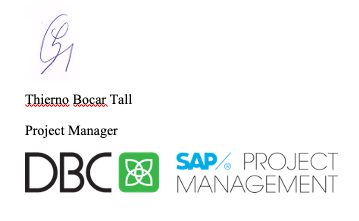
Evolving Through Learning
In project management, the post mortem or lessons learned process is an indispensable part of the methodology. The goal is to take an objective look at the project, from its inception to the analysis of its results, and determine what went well and what should be improved. It’s an opportunity to reflect on the entirety of the work, to identify and take pride in each positive element while identifying areas that require refinement. This exercise isn’t about pointing fingers or blaming particular team members; it’s instead a healthy way to focus on growing and learning.
According to Timothy Kotnour, professor in the Department of Industrial Engineering & Management Systems at the University of Central Florida, a lesson learned is a mechanism for documenting learning and sharing it with others. (A learning framework for project management, 1999).
At DBC, we specialize in ERP implementation projects, such as SAP or Oracle’s JDE. In order to keep striving for excellence and improving our processes, we have developed a host of methods and techniques to ensure that our post mortem sessions are conducted as efficiently as possible. While we won’t be diving into the deepest details here, let’s take a look at a few key elements.
The group
Size and heterogeneity are two key aspects. Post mortem sessions should not feature groups that are too small, as the flow of ideas is in part, based on a healthy number of participants. On the other hand, too many participants would make clear communication difficult, and it’s vital that all participants have the opportunity to express their views. Therefore, don’t hesitate to organize several sessions with groups of fewer than 8 people. Ideas are enriched in part by differences of opinion. To stimulate this diversity of thought, make sure that participants come from a variety of backgrounds. Within a company, there are as many different perspectives as there are departments.
The Environment
The working environment in which the post mortem session takes place is another vital component. It can be difficult, however, to choose an environment that is as neutral as possible, allowing ideas to flow freely without outside influences. In the age of remote working, this is a different issue altogether.
The Presence of a Moderator
Responsible for putting participants at ease, the moderator thoroughly explains the objectives and steps of the post mortem process, guiding discussions and maintaining the session’s progress.
Tools
A variety of tools can be used to stimulate exchanges and ideas, whether the post mortem takes place in-person or virtually (whiteboard, post-it notes, lively discussions accompanied by note-taking, etc.). The important thing to remember is that you must adapt to your audience. For all participants, the tool must be easy to understand and become accustomed to, without the need to spend a large chunk of the session explaining it.
Themes
No taboos! It’s important to feel free to cover all aspects of the project, as long as all participants continue to follow the established rules. Familiar aspects of the project are: project management, change management, business processes, system configuration, training, security, the support process, etc.
Presenting Key Findings
Keep in mind the main goal of this session. After identifying the successful practices that must be preserved as well as the elements requiring improvement, the information must be neatly consolidated. One popular technique is to make a “Top 10” ranking of the items that came up most often. It’s important to then present these results to all participants. This not only clearly displays and emphasizes key information about the accomplished work, but also reinforces the participants’ understanding of the exercise’s value.
Form Observation to Action
The previous exercise allows us to identify key factors, allowing for a clearer vision of what’s required for the future. At its core, the post mortem process is used to weave together a plan. It’s therefore essential to review the “Top 10” list before beginning the next project as well as before each major project phase. This way, successful practices can be maintained and even refined without perpetuating previous mistakes.
It should be noted that the post mortem concept also exists in the realm of Agile methodology under the form of a “Sprint Retrospective.” This is an opportunity to ask ourselves the following questions regarding a finished Sprint:
- What went well?
- What didn’t go well?
- What will we do differently next time (with the commitment of team members)?
As a project manager, there are certain key elements you can expect to find throughout your post mortem sessions, though other things might surprise you! Keeping an open mind is always crucial, as it allows you to thoughtfully consider new and enlightening information. Never forget that the heart of the post mortem process lies in the meaningful and necessary discoveries uncovered by you and your team.
Have a good discussion!


